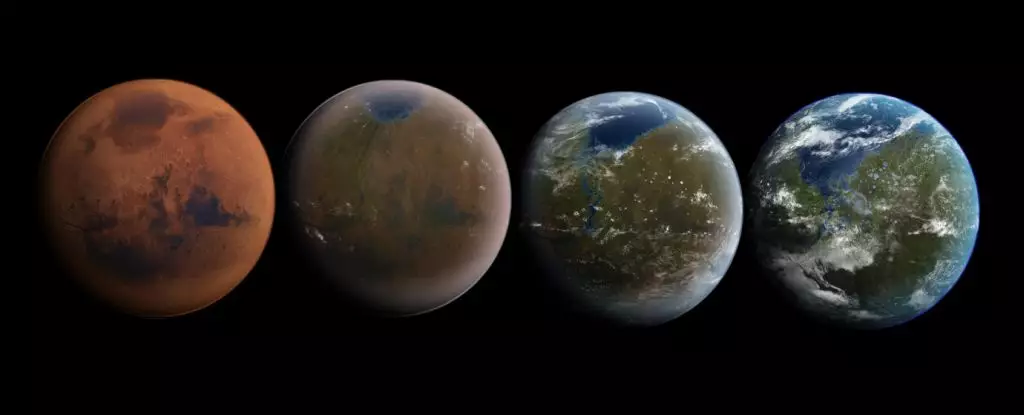As humanity continues to explore the possibilities of establishing long-term human colonies on Mars, scientists are faced with the challenge of overcoming the planet’s inhospitable environment. With temperatures dropping to an average of -64 degrees Celsius (-85 Fahrenheit), heating up Mars is essential for creating a sustainable habitat for humans. Recent research led by electrical engineer Samaneh Ansari of Northwestern University has proposed a groundbreaking method for warming Mars using nanoscopic metal rods to generate and maintain a greenhouse effect.
Traditional strategies for warming Mars have involved the introduction of greenhouse gases into the atmosphere to mimic the warming effect seen on Earth and Venus. However, Mars lacks many of the necessary components for this approach, making it both costly and challenging. Ansari’s team sought to leverage Mars’ abundance of metallic minerals, such as aluminum and iron, to create a more efficient and cost-effective solution.
The researchers modeled tiny metallic rods, similar in size to native dust particles on Mars, to be dispersed into the planet’s atmosphere. These nanorods, with an aspect ratio of 60:1, would trap sunlight and heat, creating a greenhouse effect that could raise temperatures and melt surface ice. By releasing these nanorods at a sustained rate, Mars could undergo a gradual warming process, eventually making it suitable for microbial life.
While the nanoscopic metal rods offer a promising solution for warming Mars, there are still challenges that need to be addressed. It remains unclear how long the nanorods would remain aloft in Mars’ atmosphere, as the planet lacks a global magnetic field to contain its atmosphere. Additionally, the nanoparticles could potentially attract water particles and fall back to the surface as rain, posing a potential obstacle to the long-term viability of this approach.
Despite the remaining uncertainties and challenges, the use of nanoscopic metal rods to create a greenhouse effect on Mars represents a significant step towards realizing the dream of establishing sustainable human colonies on the red planet. While the process may take several decades to yield tangible results, it offers a promising pathway towards terraforming Mars and making it more hospitable for microbial life. Further research and exploration in this area could bring us closer to achieving the ambitious goal of long-term human presence on Mars.


Leave a Reply